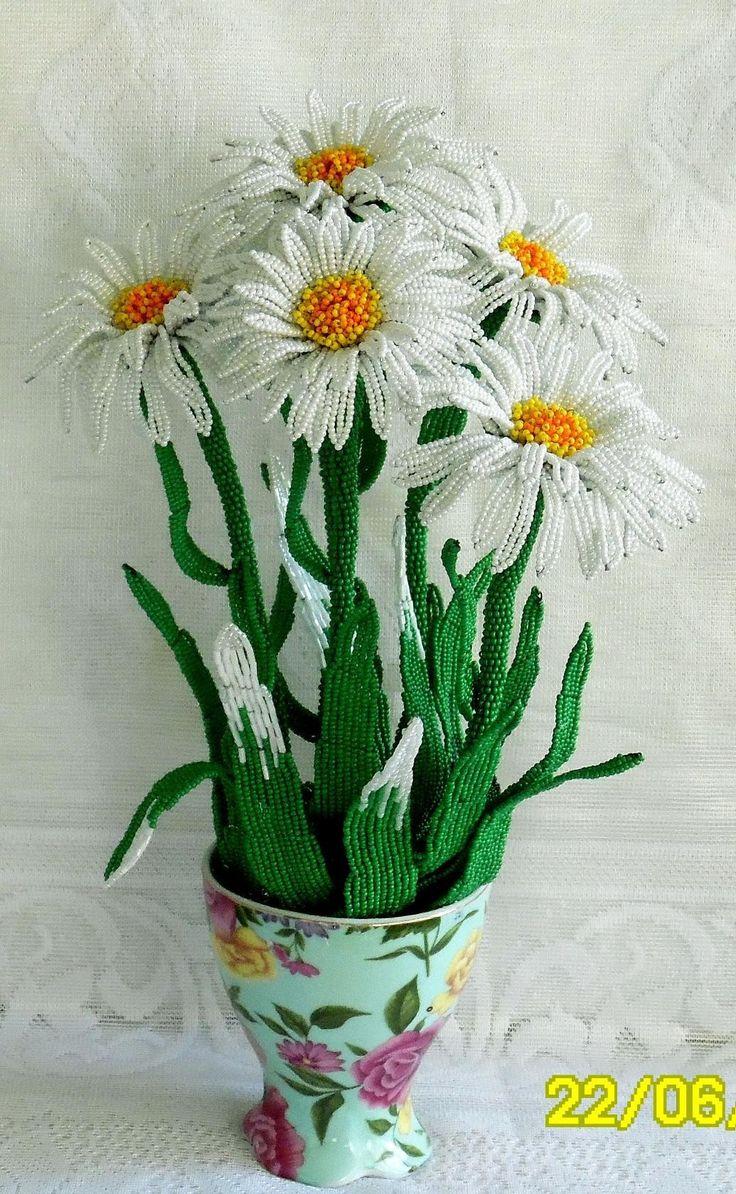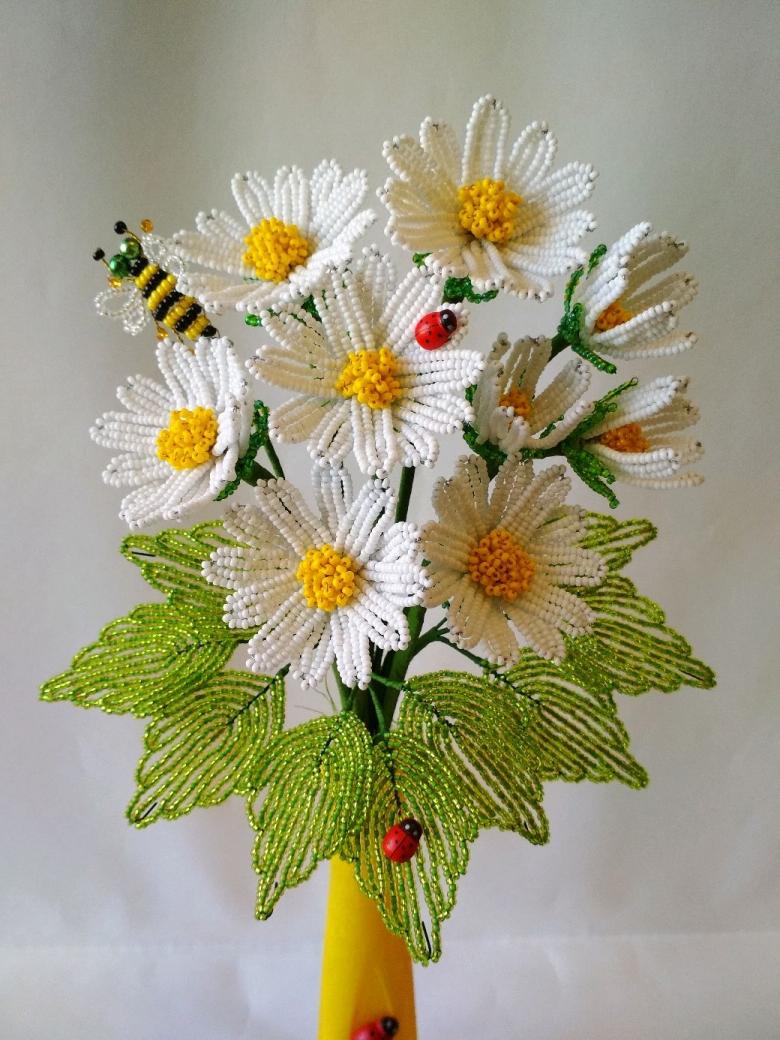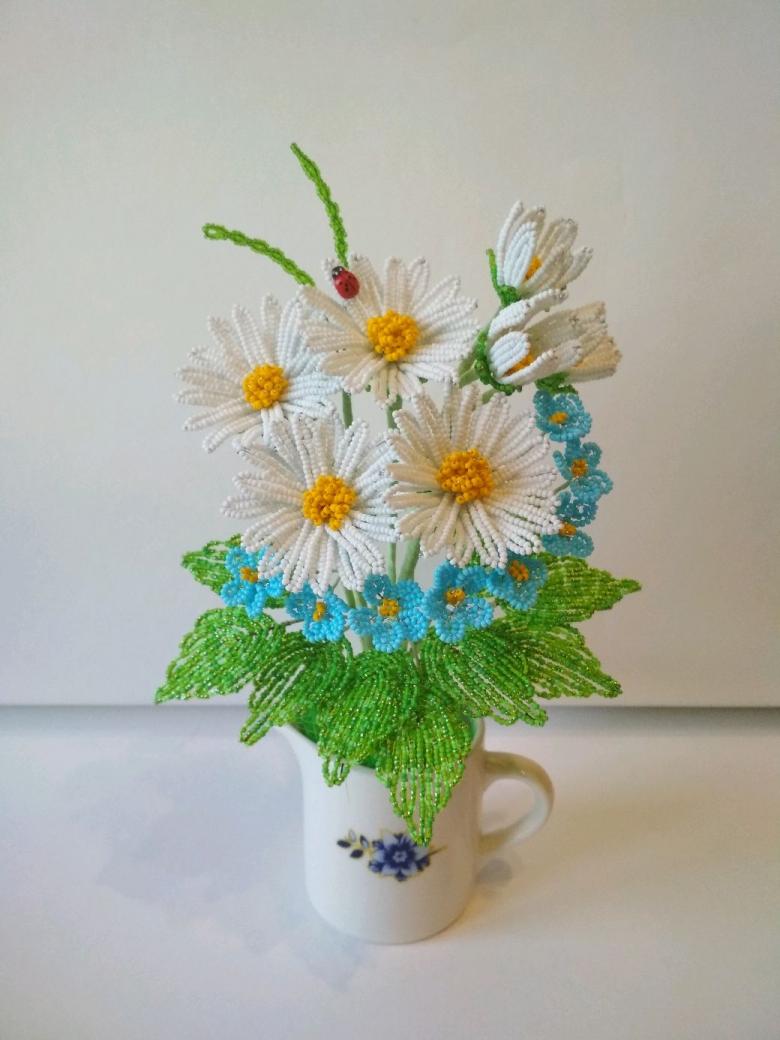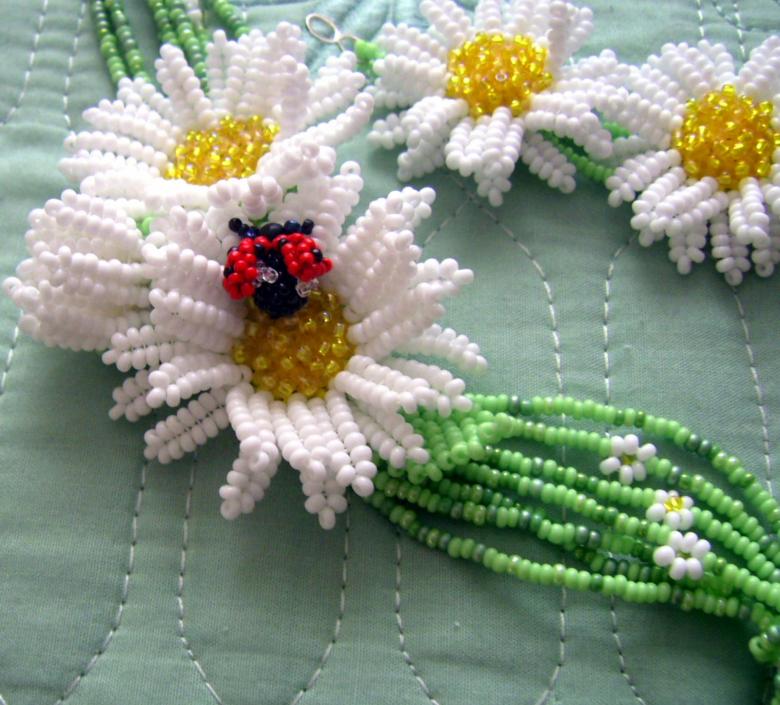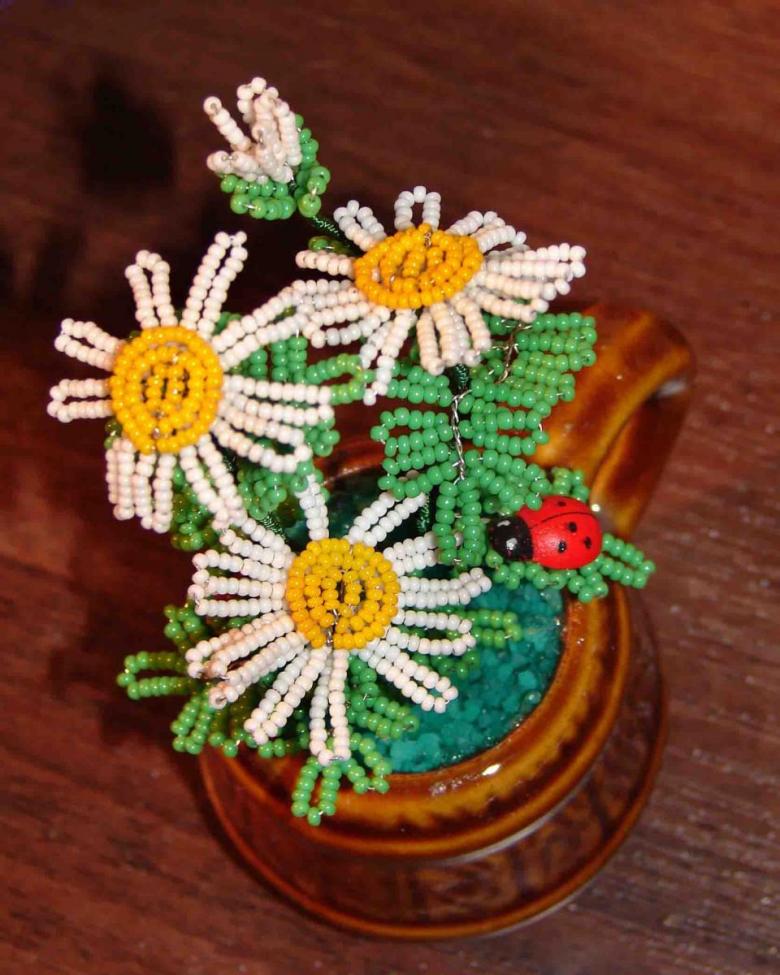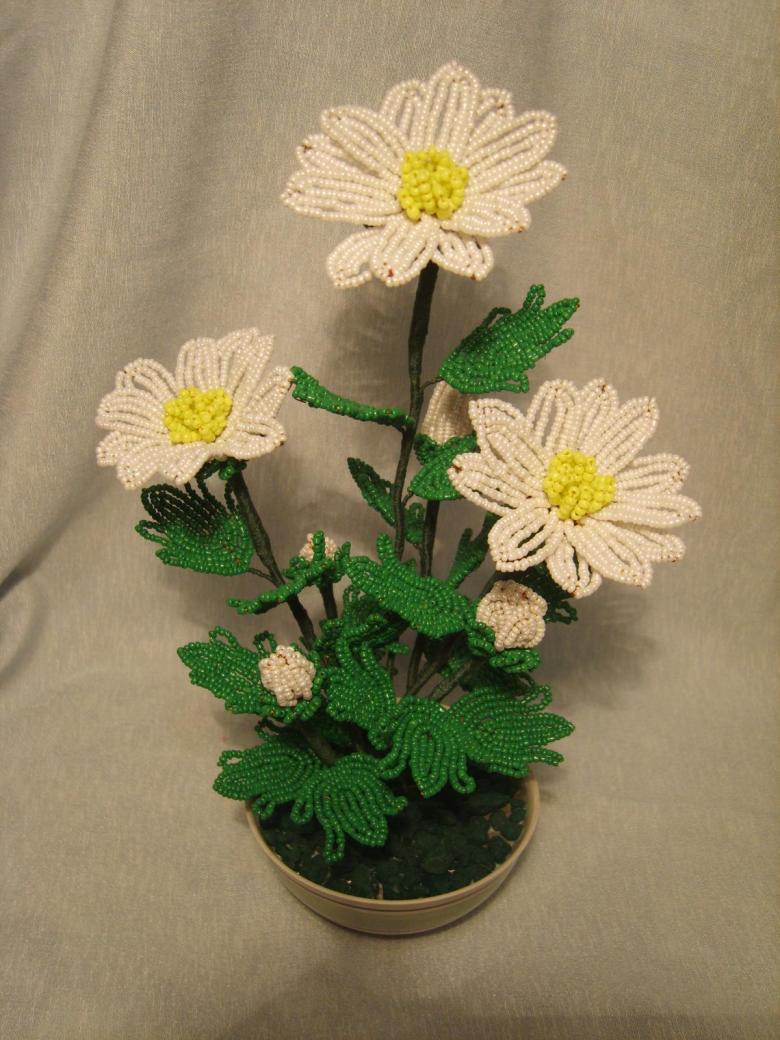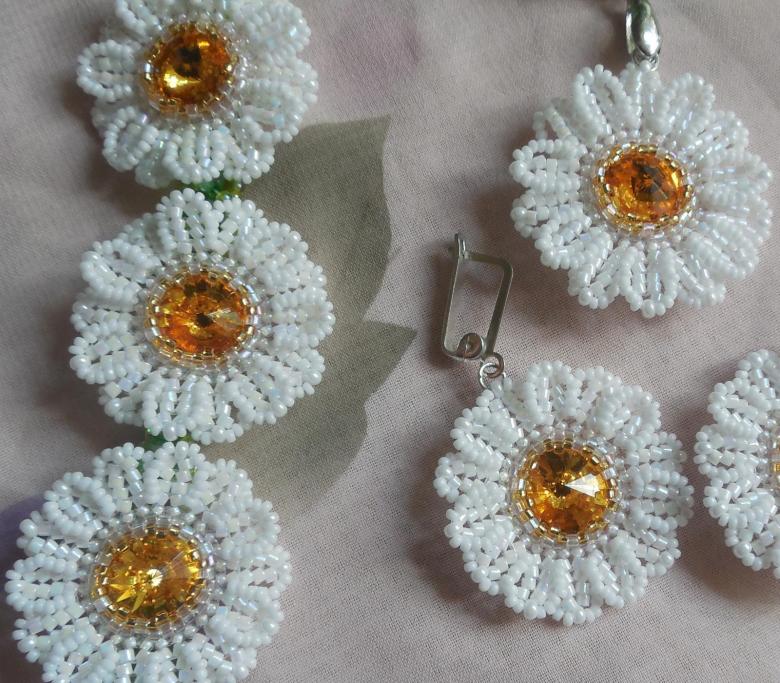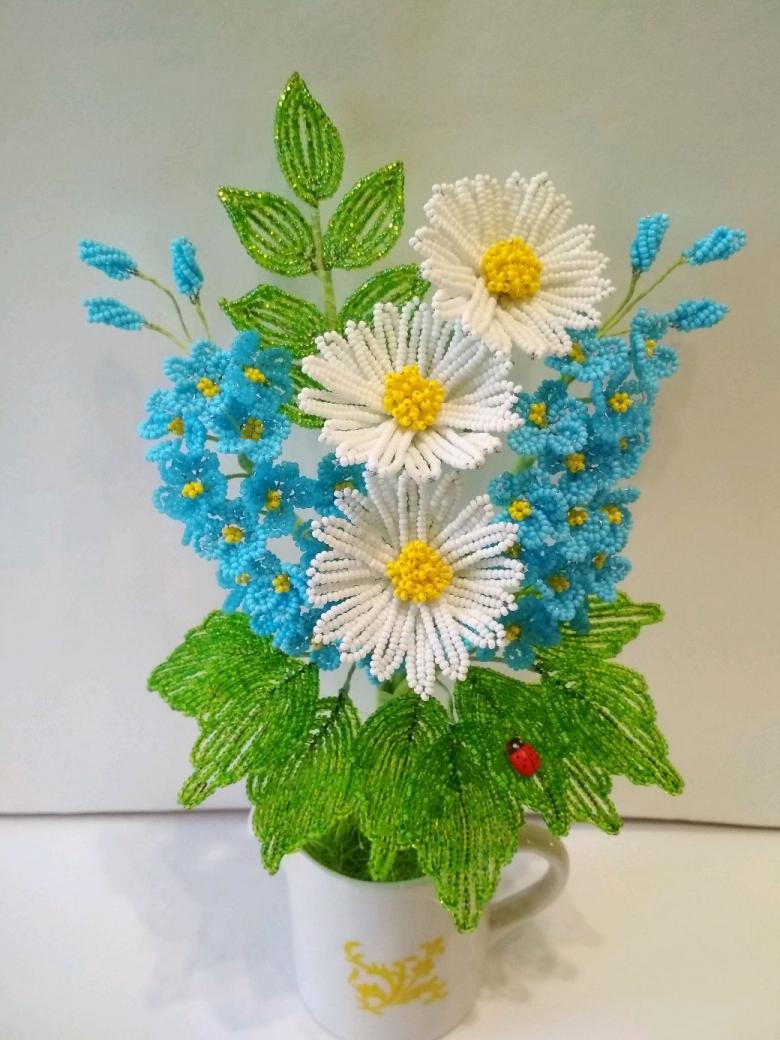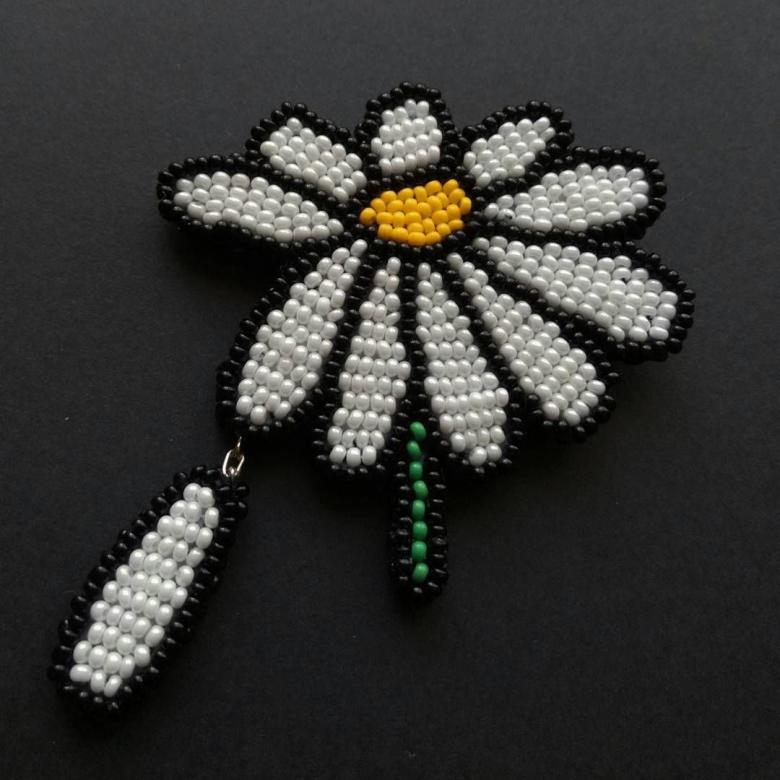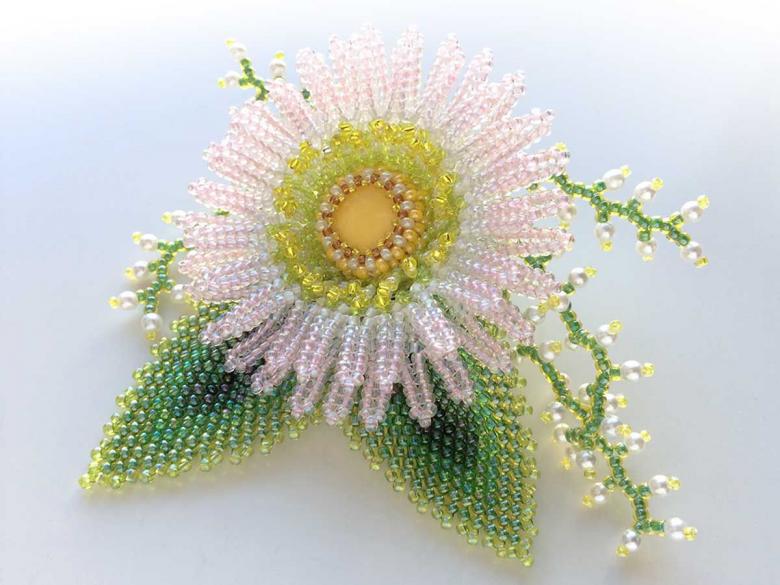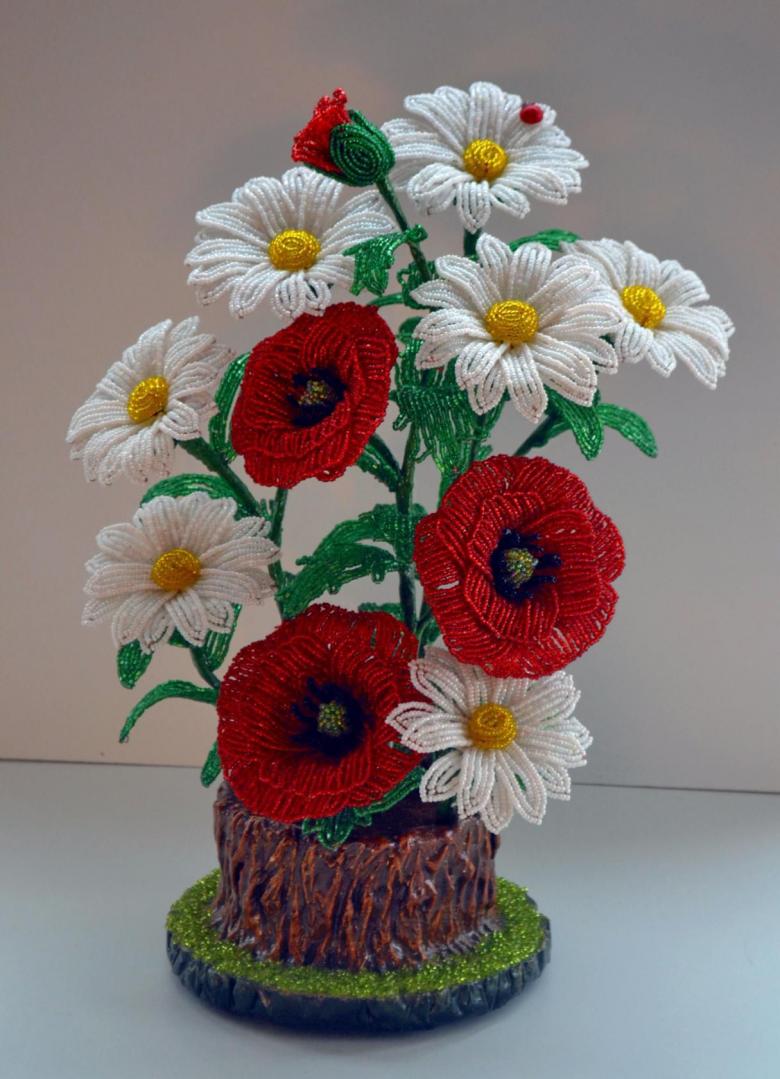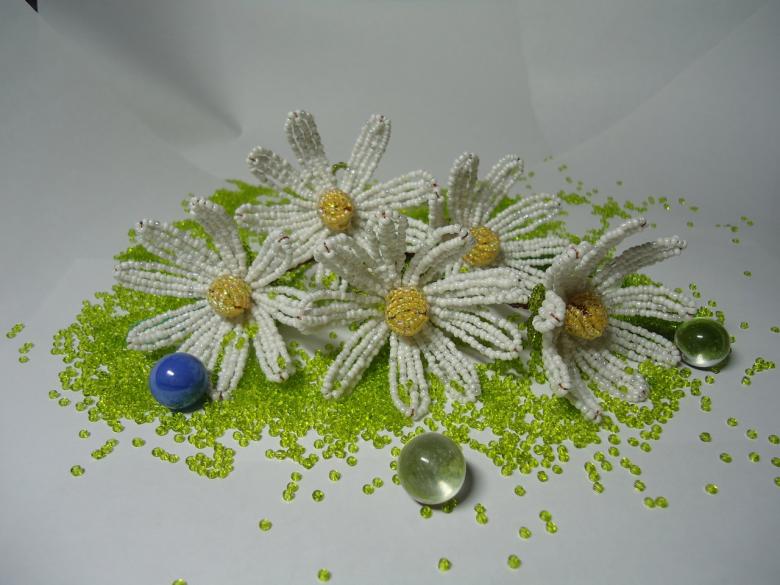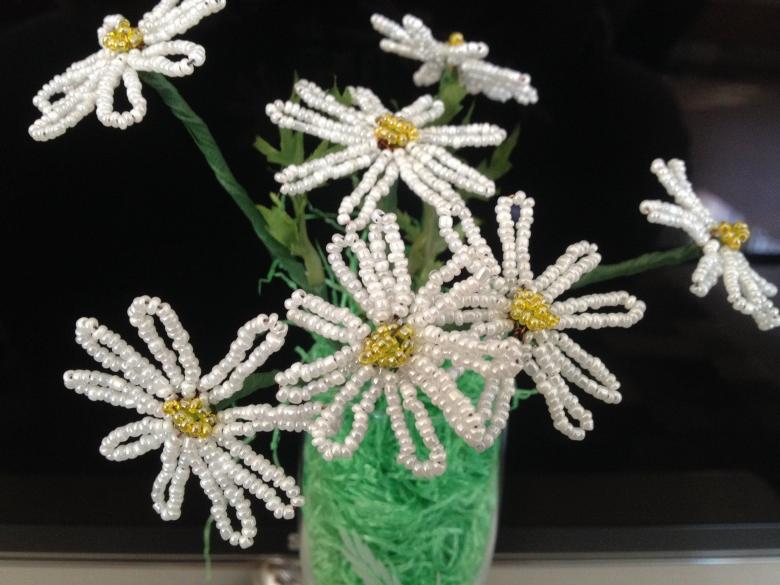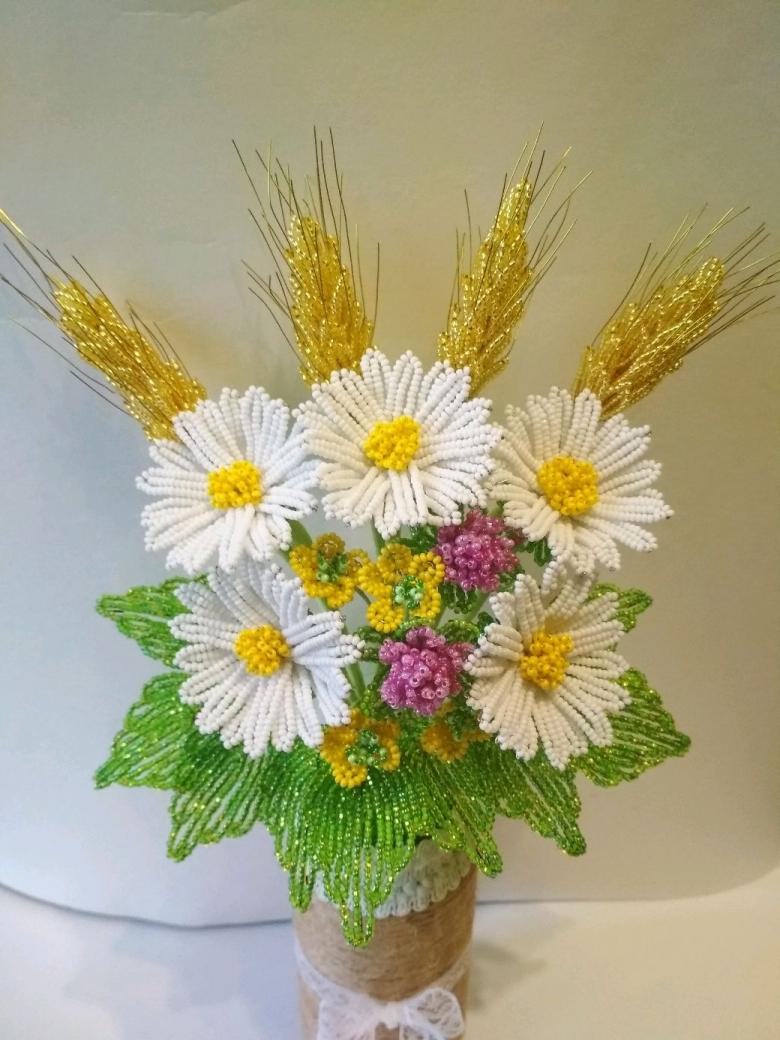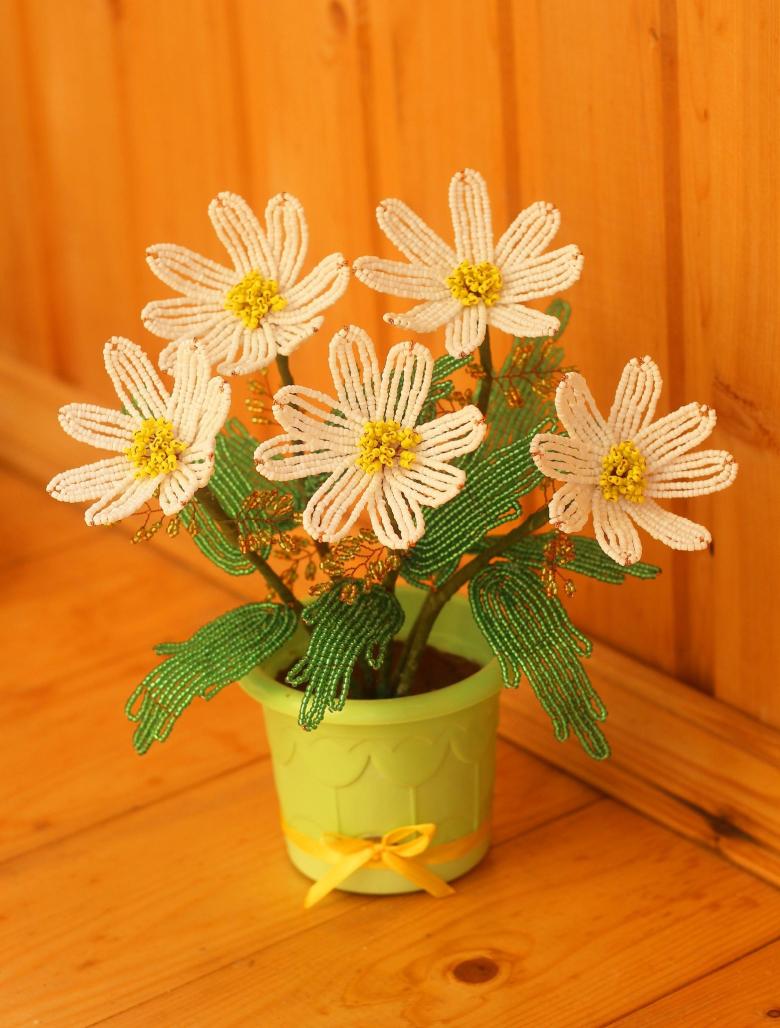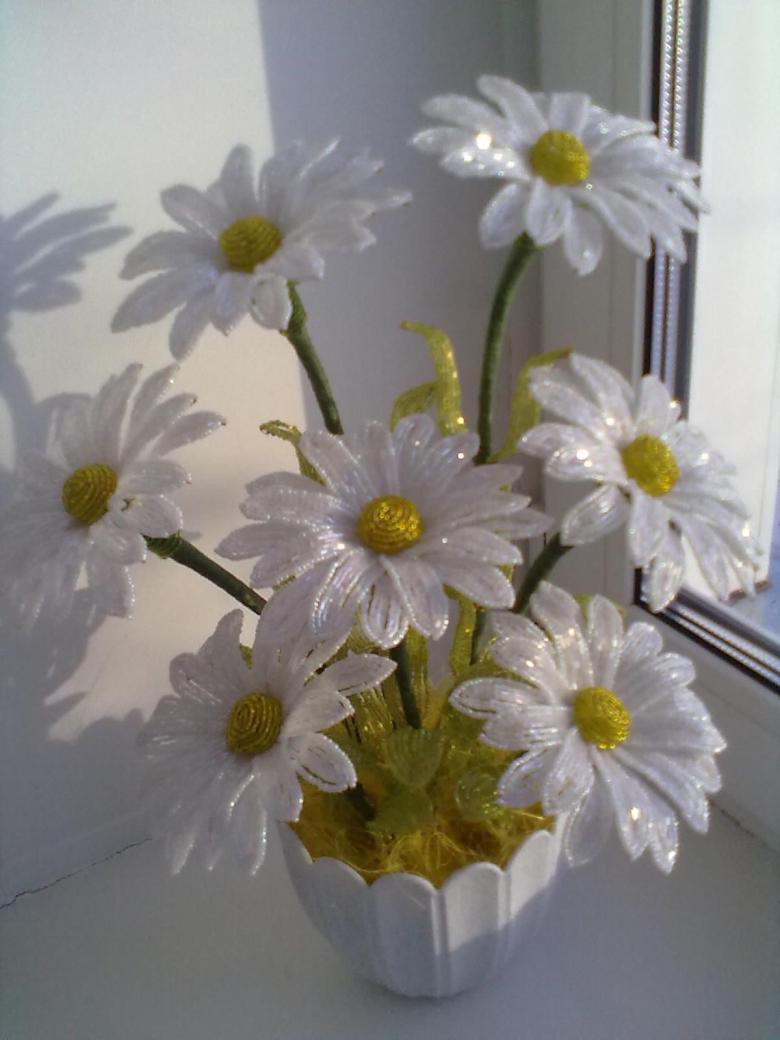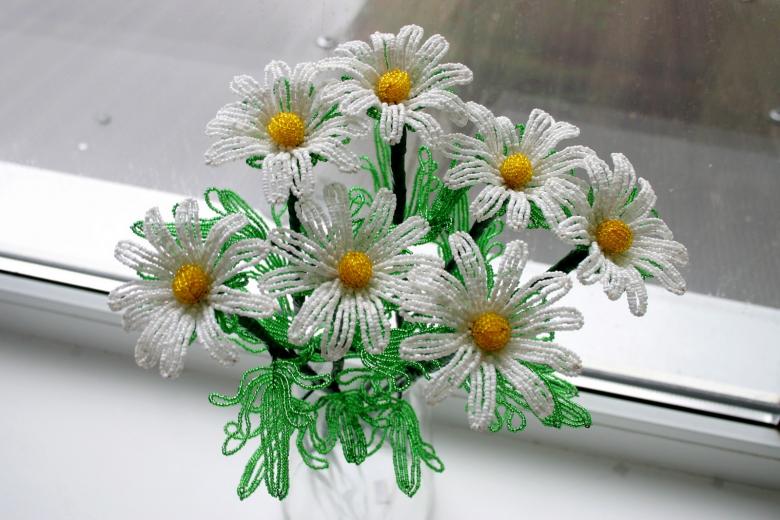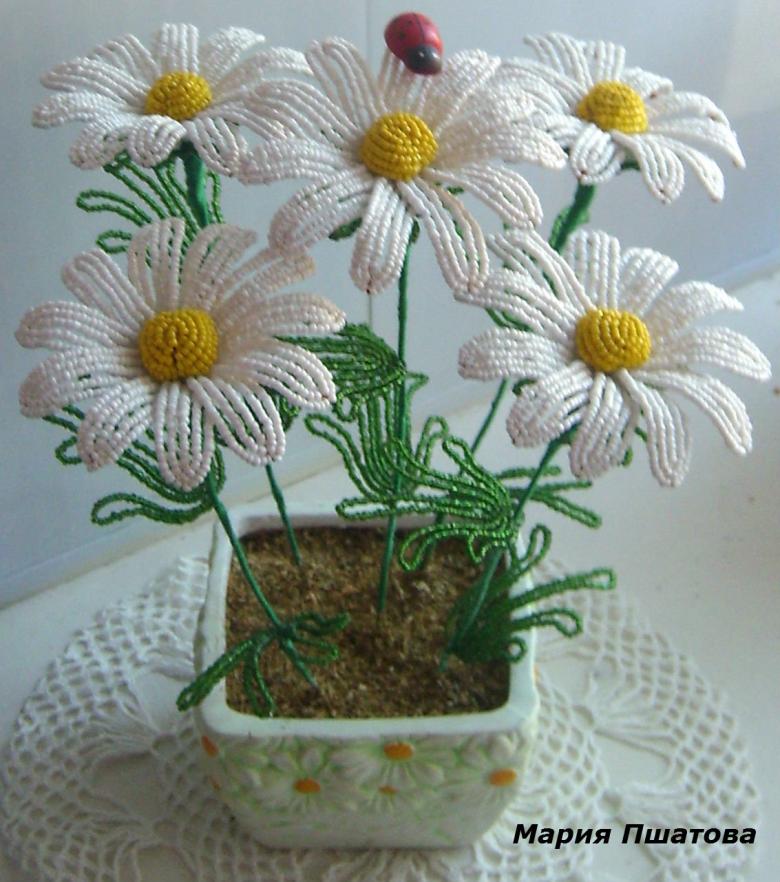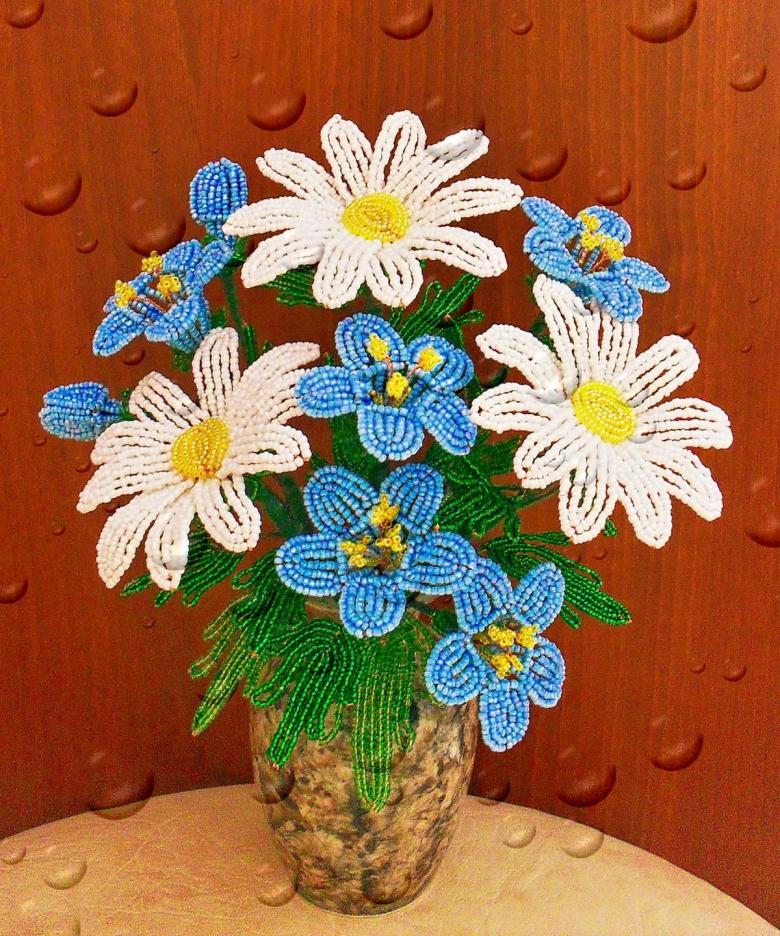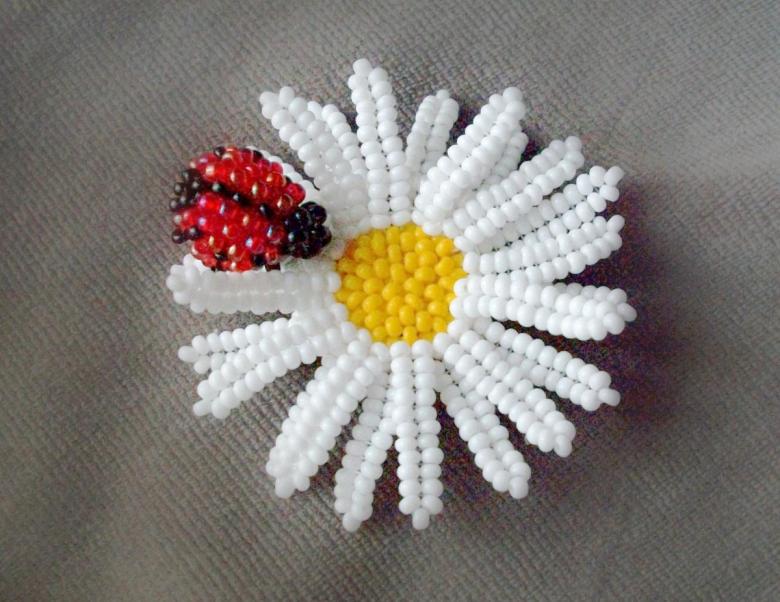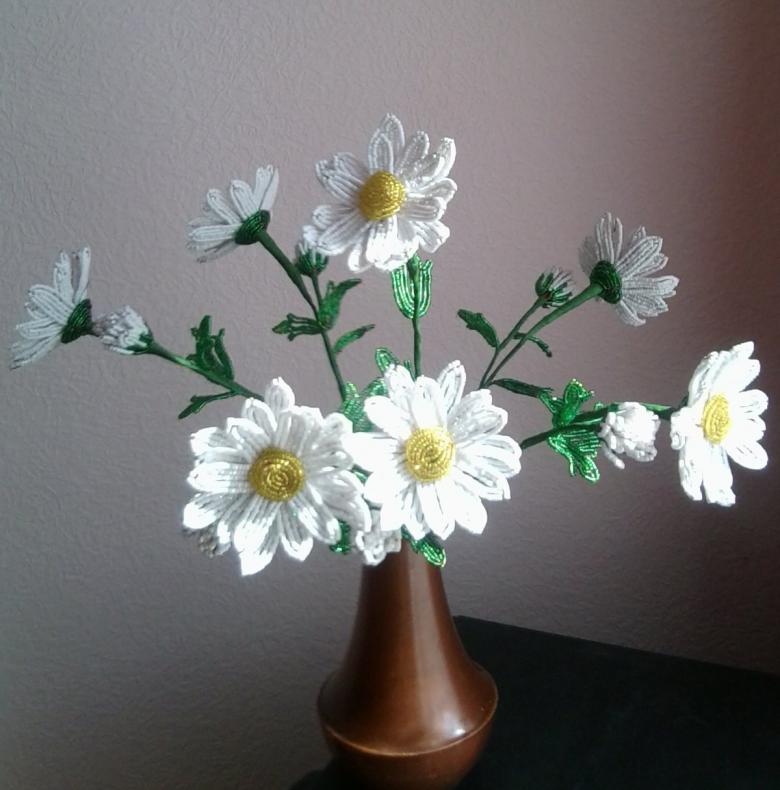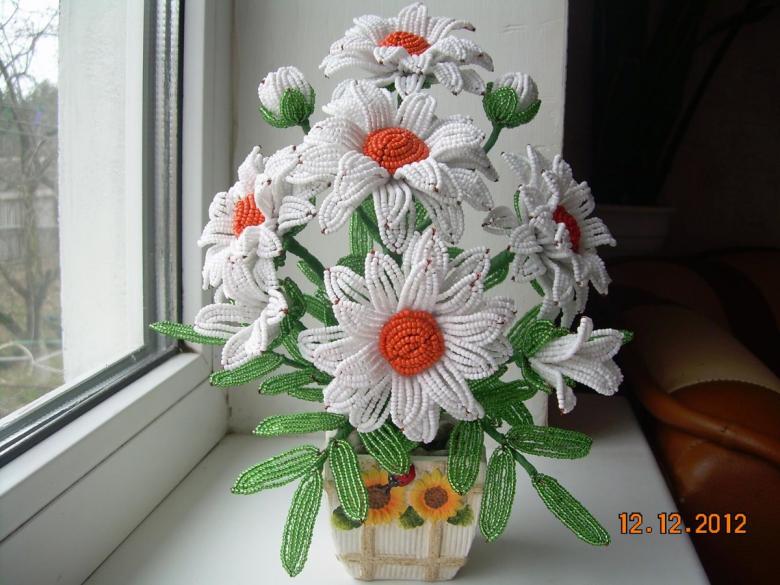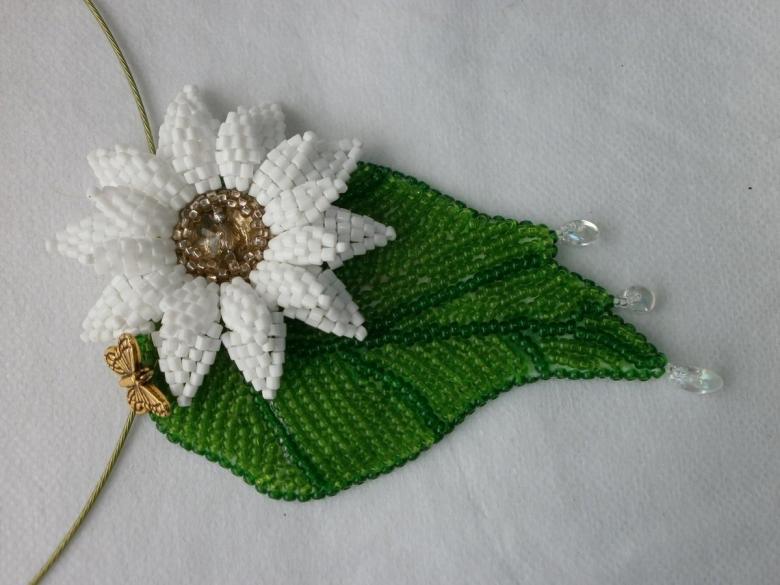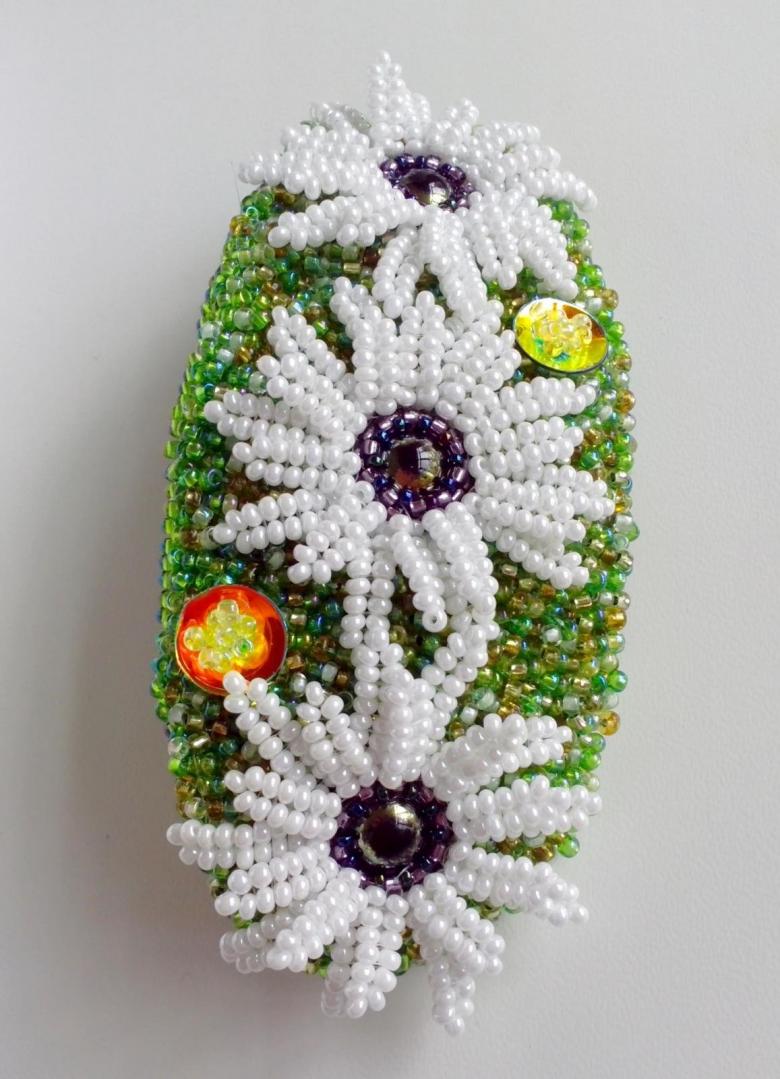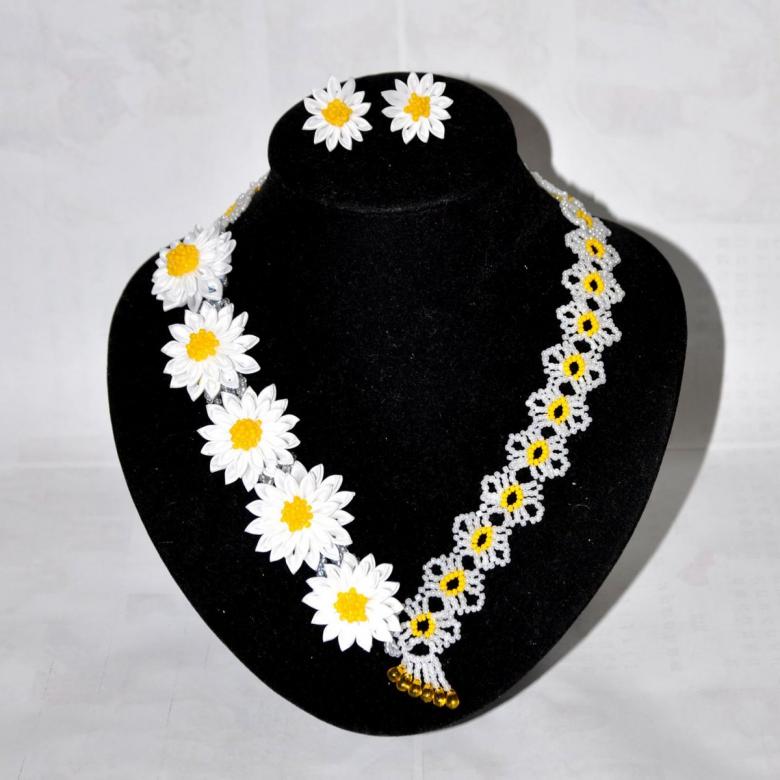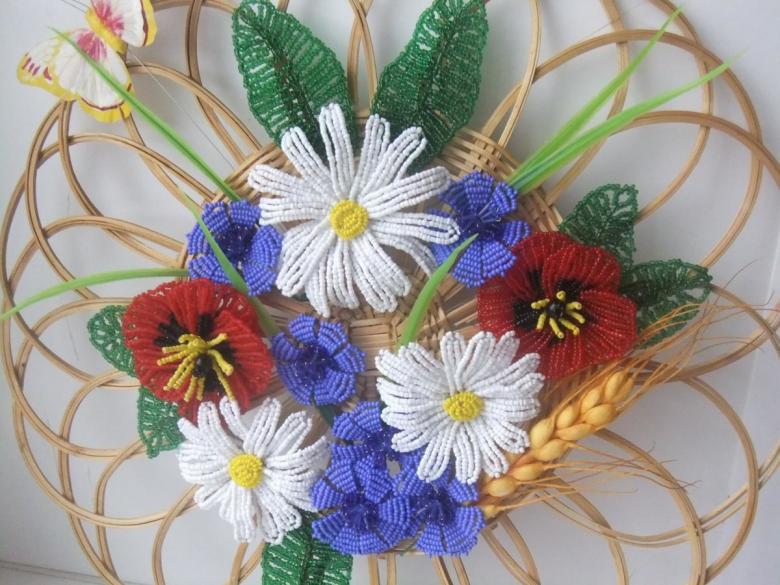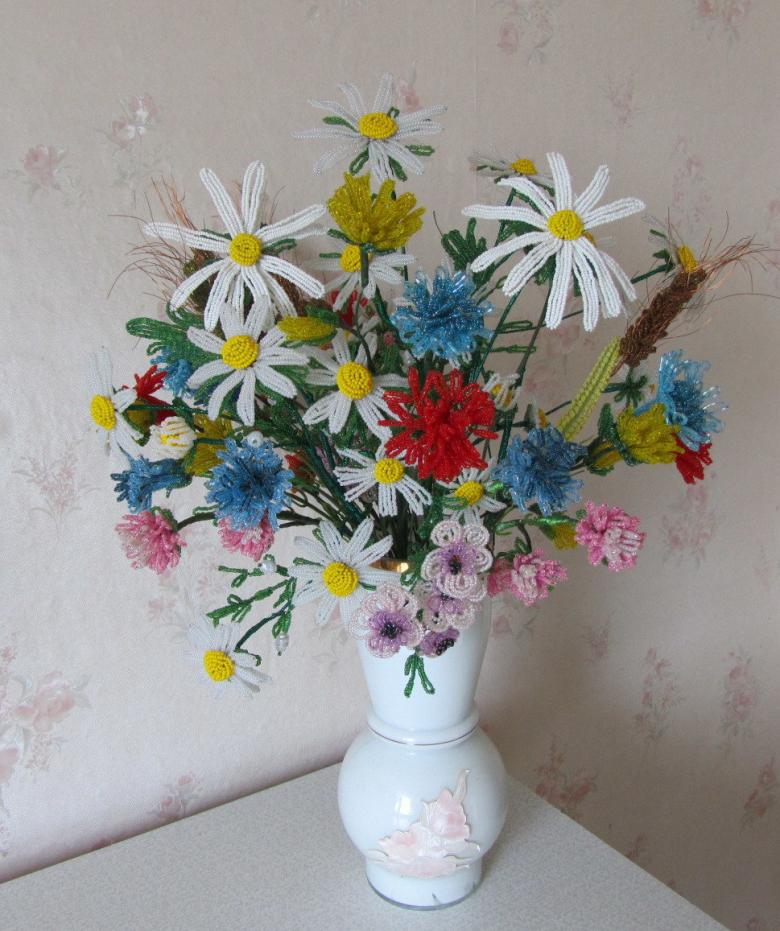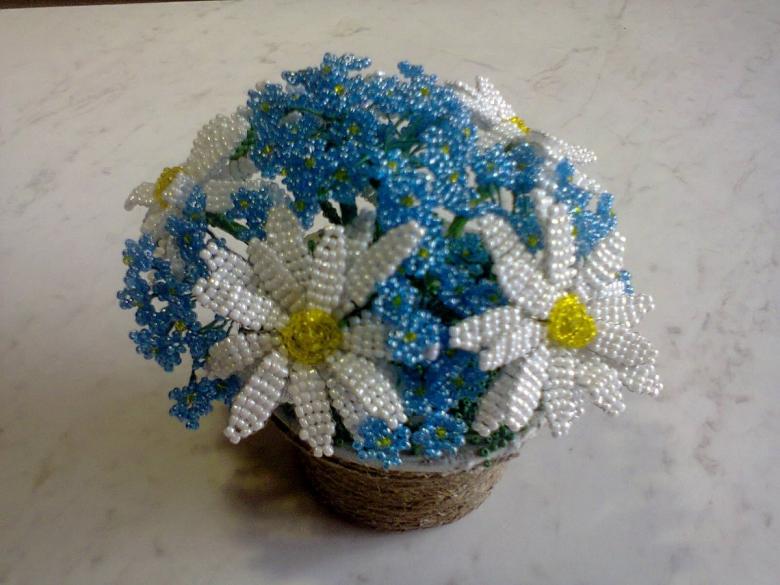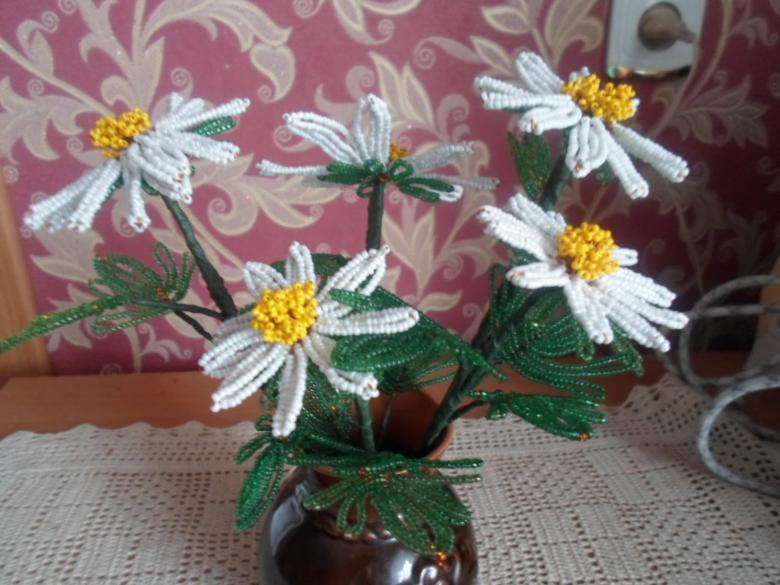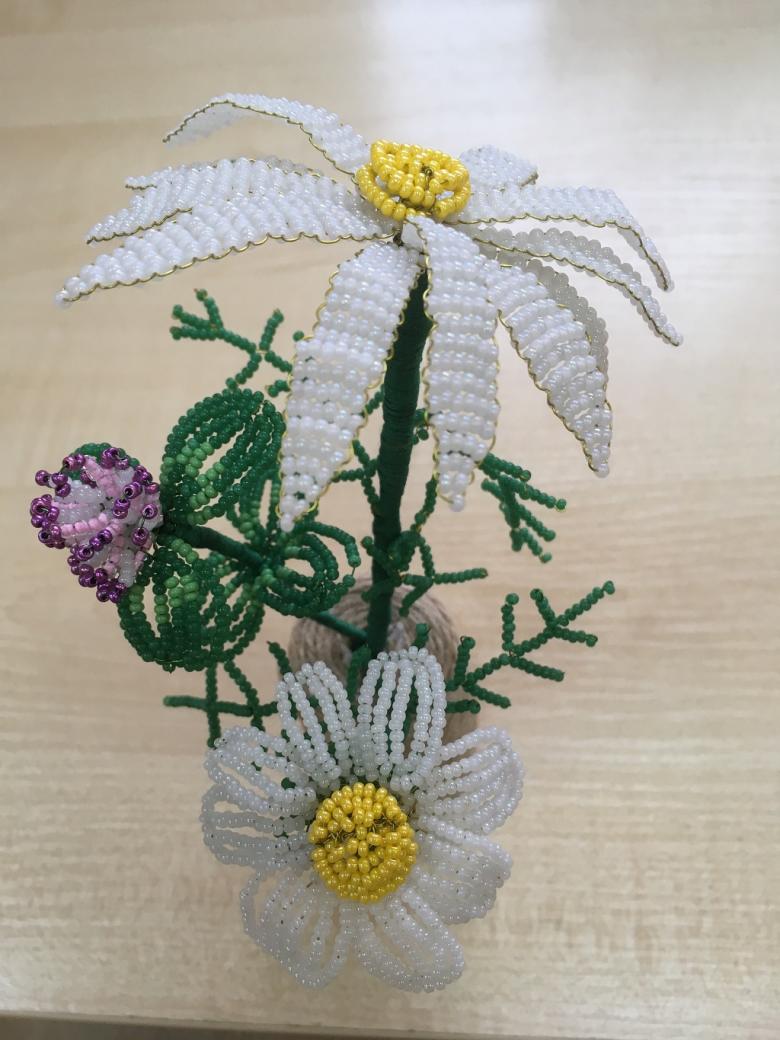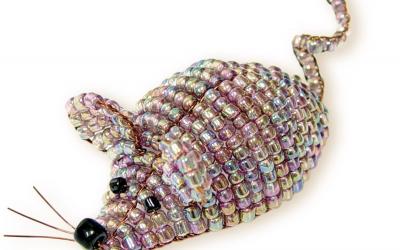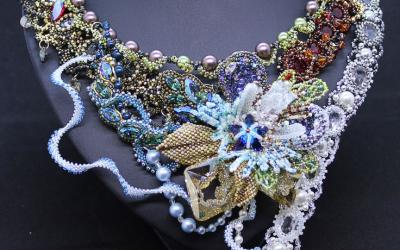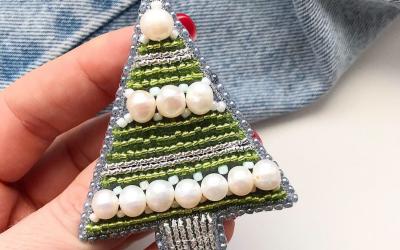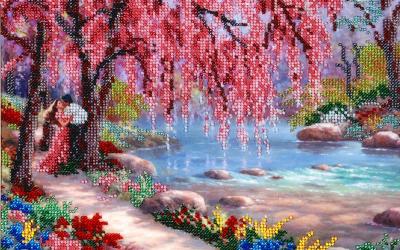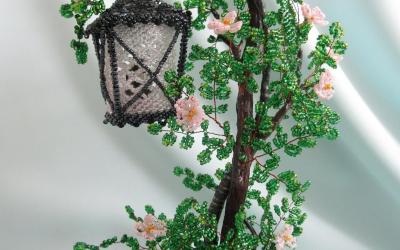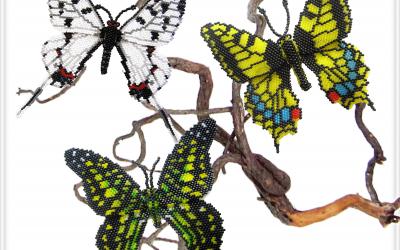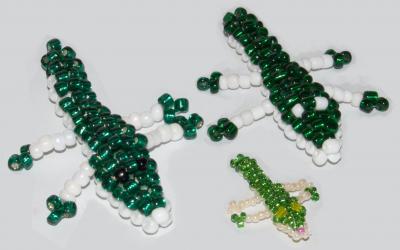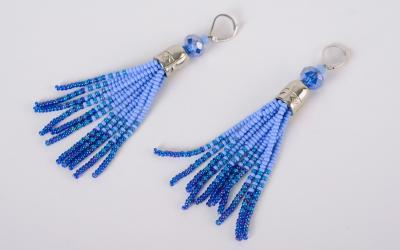Beaded camomile - photo examples of how to weave a beautiful handicraft
The daisy is known to us since childhood thanks largely to the cartoon characters. They sing the song, - "One daisy, two daisy, three daisy, and I plucked the fourth. It is used as a decoration and to make various medicines. But at home, a beaded daisy is also not uncommon, as it is used for decoration for a long time.
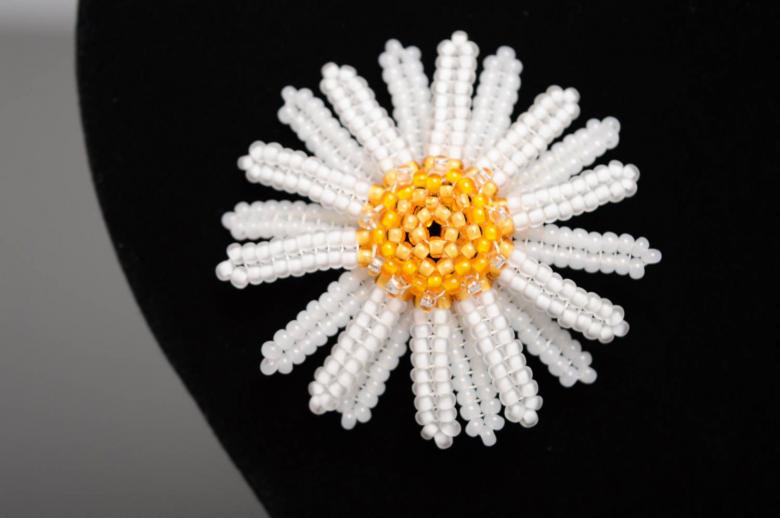
In Central Africa, some tribes believe that the plant allegedly attracts evil spirits. Therefore, they completely destroyed several species of perennial flower. But many are still wondering how to weave a daisy from beads at home without special skills. This question is of interest for a variety of reasons. Perhaps wanted to make an original gift or a child at school asked to take home the creation of an original craft.

Let's see how to weave a daisy with beads
If you need a beaded daisy will have to follow exactly the instructions for its manufacture. This requires free time, so that no one interferes, and suitable materials, tools. It is allowed to use steel-colored wire, but it is better to get a green base for the authenticity of the craft.

What will be needed:
- Wire;
- Number 11 beads, 10 grams of white, 7 grams of green and 2 grams of yellow;
- The base for the stem (wire);
- Pliers, powerful scissors;
- A little teep-tape.
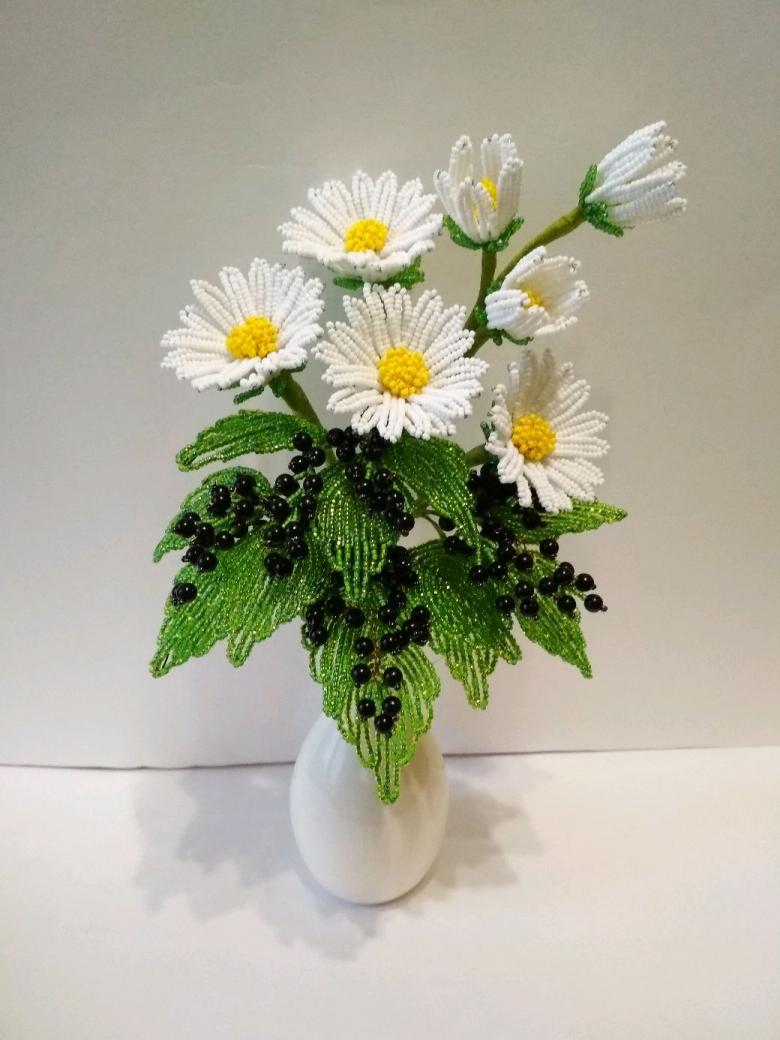
Next, we will consider the master class of the daisy from beads with a step-by-step photo, so that it is clearly visible how it is done.

Legend:
- P - loop;
- Kt - coil;
- P and R - rows/rows;
- Bs - beads;
- L, L - petal/petal.
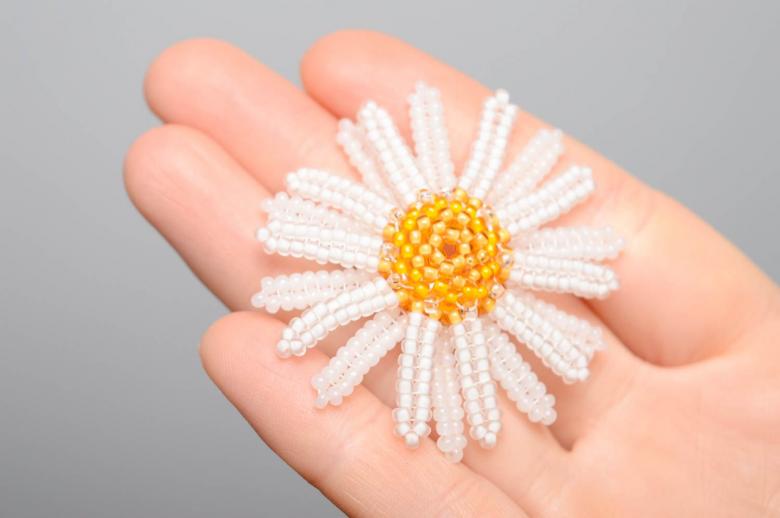
Assembling the daisy beads
Petals
We start the work with the petals. In the original flower has 12 units, they are formed by 4 p. At the base is worn white bs. He moves to the edge by about 7 cm.

The wire is bent to form a loop of bs, the loop is twisted. In the area of the tip there is a free space of 9-10 cm. From the ct, the element of bs is advanced with a height identical to the previous loop.
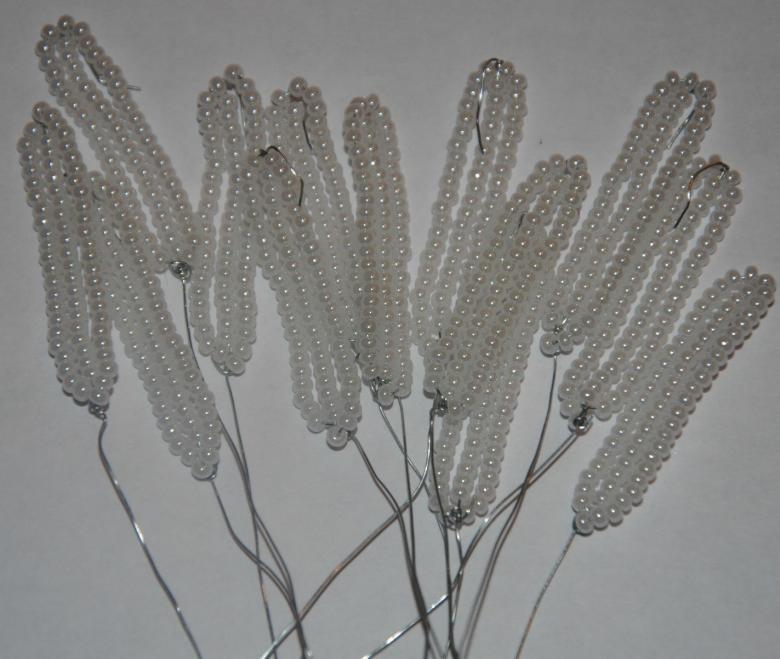
The wire is bent over the starting n to wrap it, with ct, moving additional beads to make the fourth row of leaves. Performed a few turns to secure the result of the work.

R, are aligned with the fingers. This ensures a neat shape of the petal. Bs, moves to the starting P, the second leaf. All L, weave as the first L.
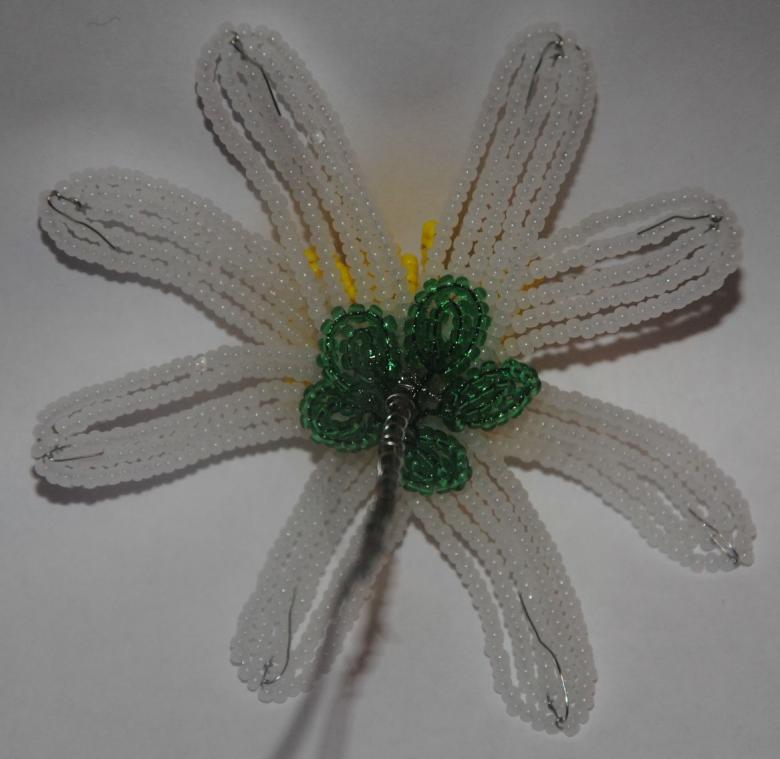
If it was possible to create all the L's, the wire is cut from Kt, but a reserve of 8-9 cm is left. The ends are threaded between the first and second L, wrapped and twisted into a P to collect the L in a circle.

The tip is pulled through again, but on the opposite side of the flower, P, wrapped around between the L. The tips are formed looking at each other. They are reduced to the center and twisted. Billet ready. It is not yet needed.

Tepals
Green bs, strung on a wire. 11 elements bs, pulled to the edge of the base, but there is a tail of 7-8 cm. Folded into a n, a few turns are made to fasten. Another 11 bs, moved in a similar way to form a P.
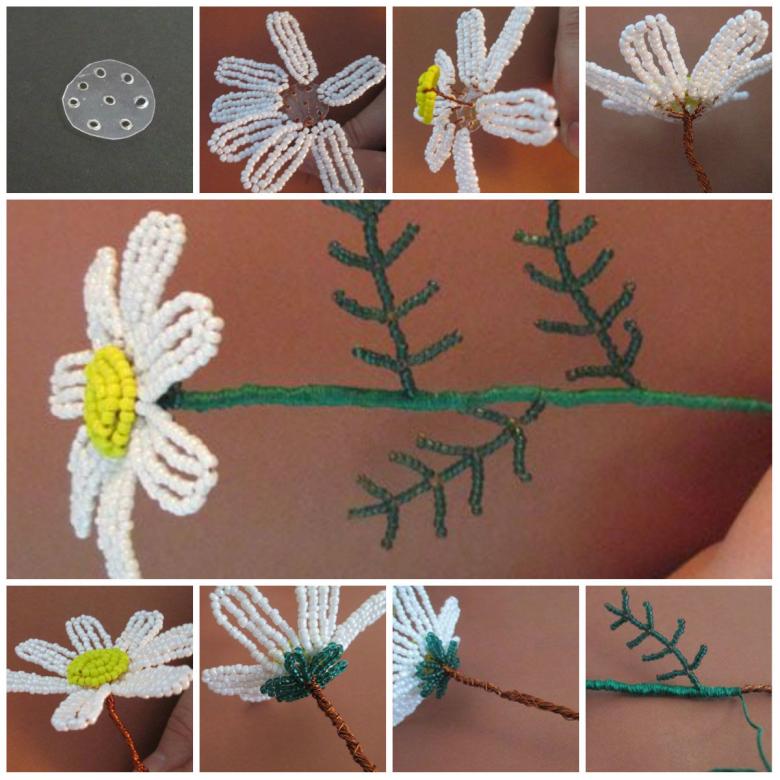
Continue to create the sepals for the remaining 9 petals. The base is again cut off, but the remaining 10-11 cm. Fastened into a ring, the wire is passed between the first, second sepals. The ends are twisted. Billet is set aside.

Leaves
Bs, is threaded on the wire. A small p is created on the edge, so that the bs, can not slip. 16 bs, go up to the n, but stop before it at 6-8 cm. Below the wire is twisted into an n. A p is created, slightly larger than the starting strip.
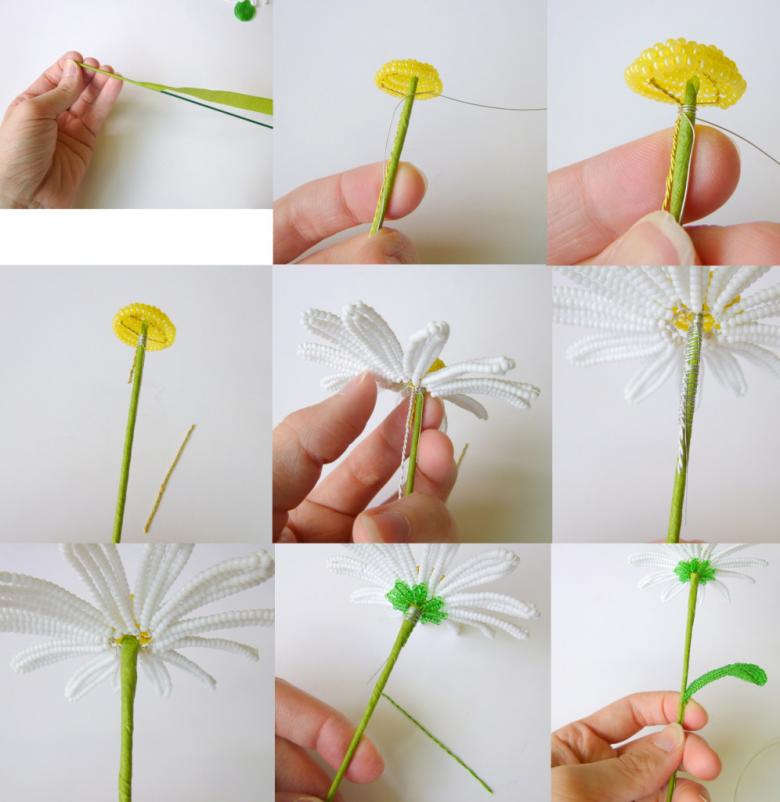
The base is wrapped around the p, on top of the starting p. Added bs, as in the first p, again creates a p, at the bottom of 1 p. This place is made pointed, so here it is necessary to turn at an angle of 45 degrees.
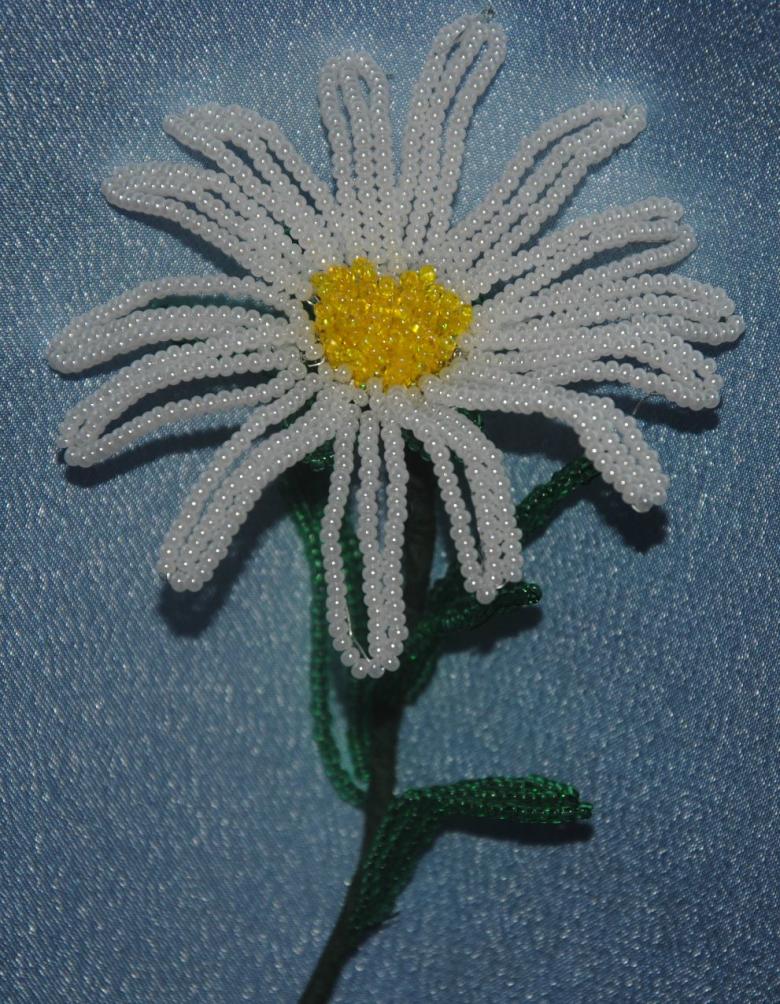
The weaving of the leaf continues. Bs, moves, performed turns around the central axis. The leaf is formed 11P. Of these, 1 central and 5 on both sides. The working tip is turned near the base 2-3 times and is cut off thanks to the wire cutters.

Excess wire above the leaf is also removed. P, below the leaf is twisted into a strip. Now it is clear what kind of leaves in a daisy of beads, and what you need to do to make them. The workpiece is set aside, but not far away.
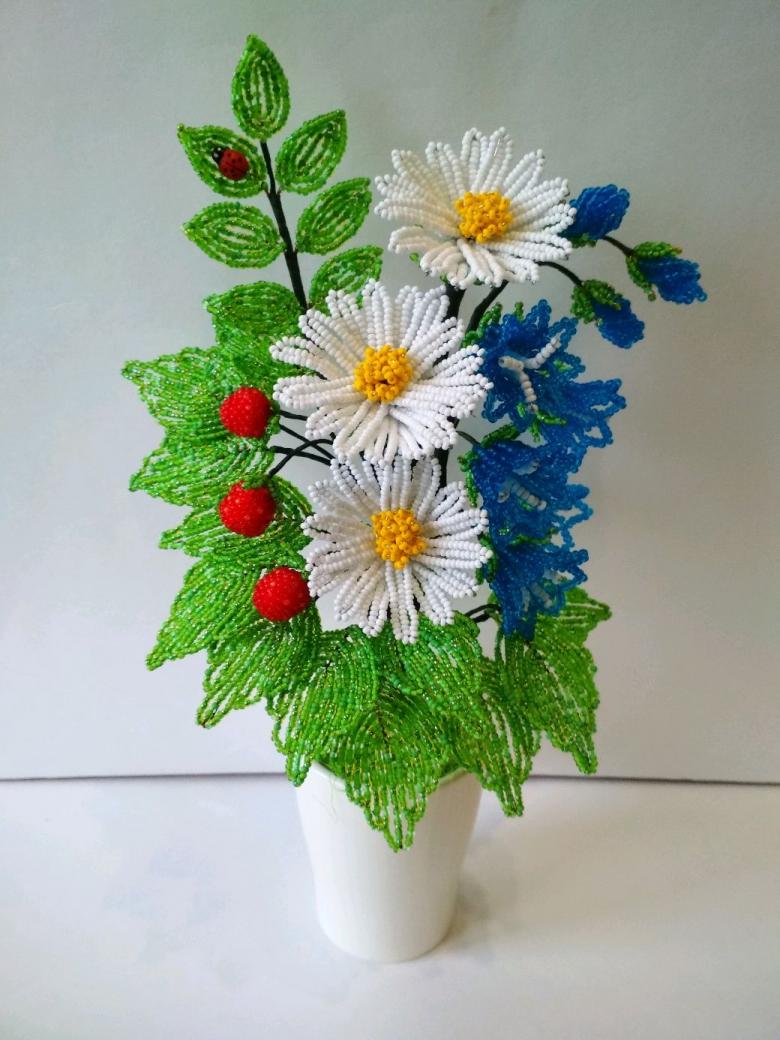
The core .
Bs, is threaded on the wire. Weaving is done in a similar way to leaves. At the end of the base is formed p, pull up 1 bs, under it is added a large p. It is made p2, as p2 in the leaves. Takes 3 bs, to form it. It takes 7p to form a circle.
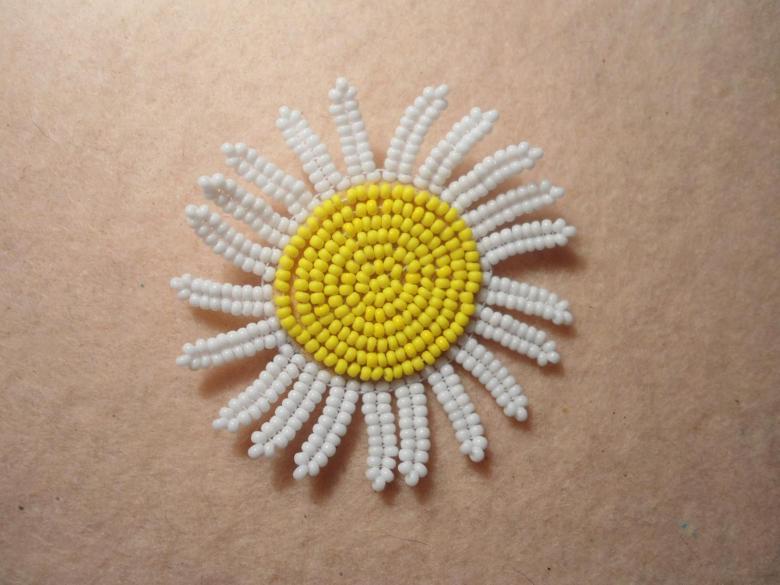
Volume is provided by bending the wire on the basis of the end of the loop and a large p, directed to the bottom side. Woven 4 final p. The working end is strengthened with 2-3 turns and trimmed for the neatness of the craft. Completion loop and large p, is twisted to form a prepared billet.
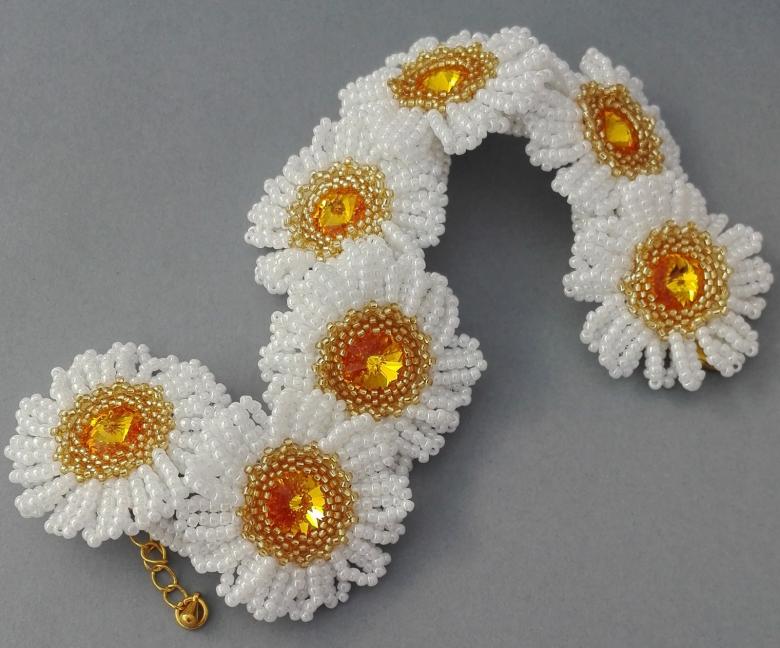
All workpieces are inspected to see if there are any mistakes. If all is well, you can proceed to the final step.
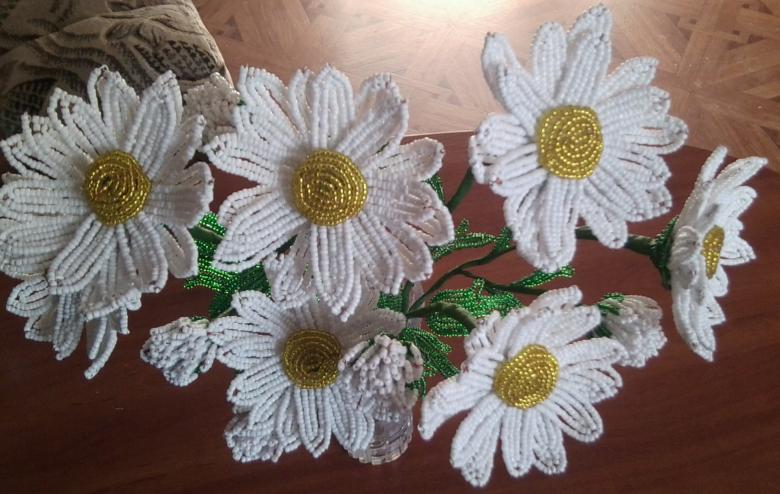
Assembling the blanks into an authentic daisy
All blanks are laid out in front of the eyes. It is necessary to follow the next steps of manufacture:
- The wire or other base used for the stem is wrapped with tape;
- The core is taken. It must be connected to the stem. It is fastened with additional pieces of wire. The remnants are cut off to form a neat look for the craft;
- Petals are put on. They are connected to the stem. Wrapped with tape;
- Put on the sepals. They, too, should be secured by wrapping with tapes. It is used up to the place where the leaves are placed;
- The leaves are placed by wrapping with a piece of wire material. The rest of the stem is wrapped with tape. The leaves are aligned to form an attractive shape;
- Our beaded daisy is complete. But for the bouquet, several more units are woven.
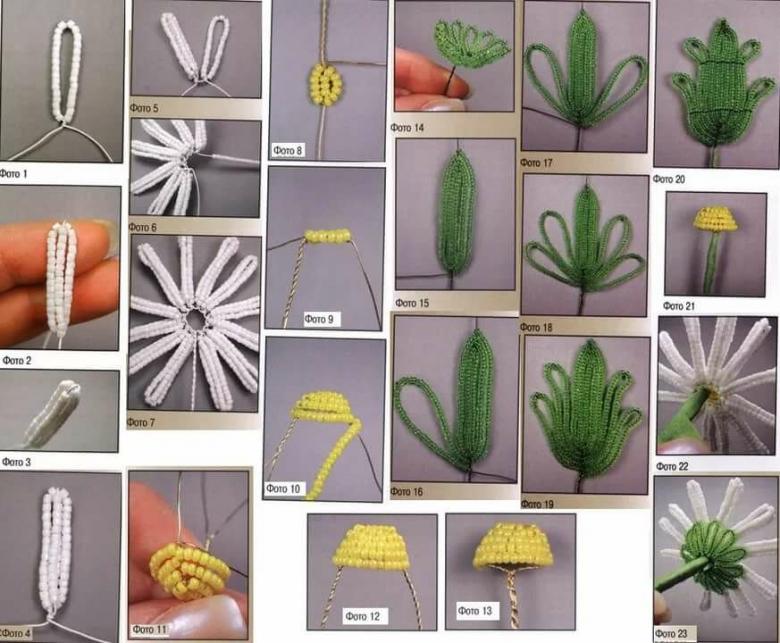
Perhaps this example can not be attributed to the simplest options. But experienced hobbyists of needlework will be able to create a unique daisy step by step thanks to it. Externally, it is very similar to a real perennial flower.

The impression that it lacks a bee for pollination. Although, if you really want, you can find here how to create this useful insect.

Thanks to this you can create a unique composition, which is suitable as a gift for a woman or can decorate the territory of the kindergarten, school class for the study of biology. In any case, the new challenge will allow you to consolidate the acquired skills and learn something new.


